As a “real” photographer – a pro even; certainly an expert – I feel like the Papershoot is not really targeted at me. It’s a microscopically small sensor, point and squirt that doesn’t have a real viewfinder, never mind an LCD display on the back. It’s about as basic, stripped back, lo-fi, simplistic and even slightly gimmicky camera as I could possibly imagine (well, nearly at least). But that’s exactly the point, whilst that’s a list of everything wrong with it, it’s also a list of everything that makes it brilliant. Gimmicky outer housings aside, I really love the concept here, and would actually encourage pretty much anyone – photography pro, expert, amateur, newbie alike – to have a go with one! Why? Well, because it’s fun. That’s it then, review done. I feel like I actually could just leave this review at that. Read on for the same simple message but in more words.
Honestly, it really is a lot of fun. It’s the sort of fun film photography with disposable/low-end point and shoot camera was when you could buy a camera, shoot and get the film developed/scanned for less than what a roll of Portra costs these days. I’m leveraging the common moan about the cost of film photography here even though I don’t necessarily think it’s as big an issue as some people make out. The problem is, whilst film photography can be done on the cheap, making it that cheap involves taking a more complicated approach such as bulk rolling and home development. Of course, these processes are fun in their own right, but at film photography’s lowest ebb back in 2012-ish, it was cheap fun and there was a lot of pleasure to be derived from the experience because it felt like you didn’t need to take it so seriously if you didn’t want to.
In 2025, even what it feels like should be cheap point & shoot digital cameras have escalated in price. The film resurgence continues, but we are now also in the era of the digital compact camera resurgence. A couple of years ago, there were many digital cameras that you couldn’t really even give away that are now commanding serious cash on eBay. I think some people are seeking them out for the way they render images, but some are also seeking them out for a shooting experience that differs from using a smartphone.
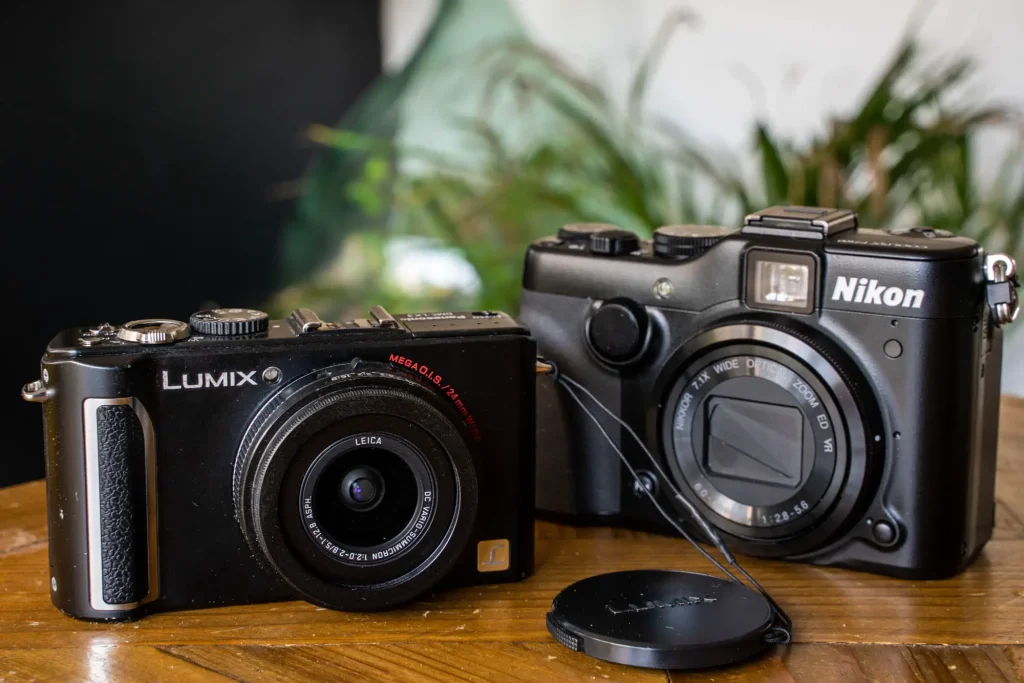
What I find interesting is the parallel between the film resurgence and this new digital compact one – that being that there aren’t many of the big brands still making the sorts of cameras people are seeking out new. And if they are, they are very expensive.
Another parallel is in where there was always disposable film cameras, there’s also a digital equivalent. Of course, digital cameras don’t need to be disposed of after a single use – this is pretty much their strongest marketing angle. But they can still be made cheap with simplistic features and rudimentary controls. The most obvious parallel is where certain brands have tried to mimic the design of disposable film cameras but have just replaced the guts with digital camera parts.
Then, taking advantage of the fact that there’s no need to accommodate a roll of film, there are other cheapo digital cameras that mimic the design of higher end film cameras such as these little TLR style ones. There’s also the scamera digitals that go out of their way to look like higher end prosumer cameras such as these types, which of course also exist in the film photography world too.
I think this is possibly why I find the Papershoot cameras to be a little more interesting to me, they are just a little different to anything else I have seen, either film or digital. They are digital, and yes they draw on some of the experiences of film photography, but in terms of their overall offer, I think they provide something of a more unique shooting experience that doesn’t really have a parallel in film photography or anywhere in the digital world either. I suspect this is why they have absolutely exploded in popularity over the last few years.
What is the Papershoot?
The Papershoot camera is a very simple point and shoot digital camera with very little in the way of controls. In fact, it basically only has a shutter button and a little switch on the back. It doesn’t even have an on/off switch – more on that particular oddity in a moment.
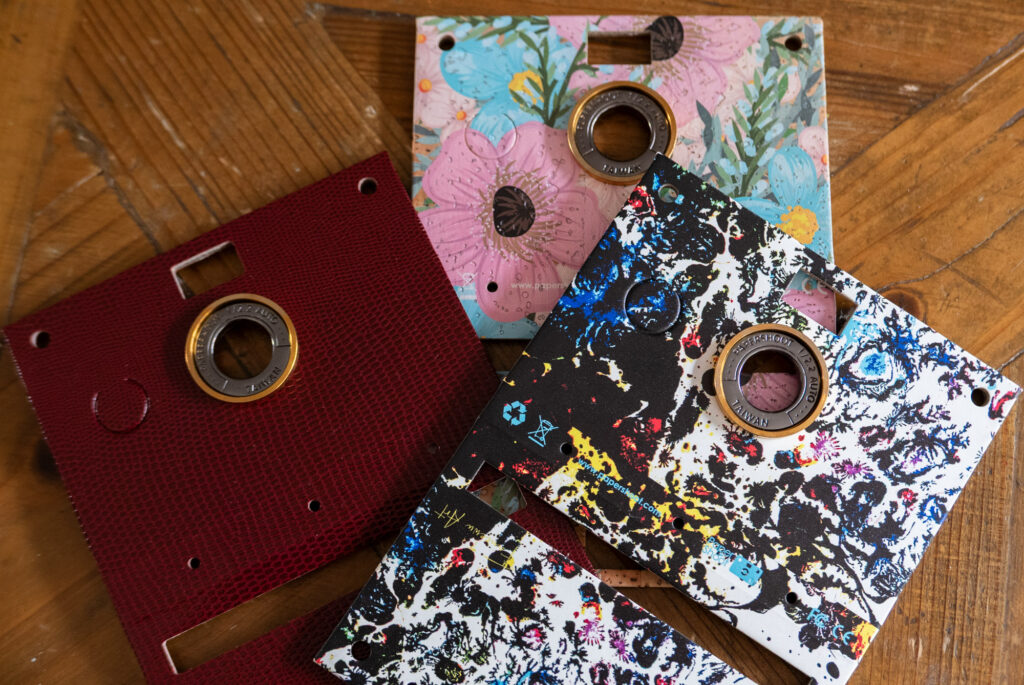
It’s called Papershoot because the outer housing is made of what basically amounts to a bit of folded thick recycled paper (or recycled plastic if you want a more fancy one). The camera itself is essentially just a printed circuit board with a slot in it for a couple of rechargeable AAA batteries. There’s also a USB slot which charges the batteries and allows the transfer of the images from the camera to the computer as well as a standard SD card slot. Finally there’s also a smaller slot for what look like SIM cards. These little cards are optional extras that slightly change the camera’s settings when inserted. Again, more on those in a second.
The specifications(…?)
At the point of writing this section I decided to do a bit of digging. I went on to a couple of the different Papershoot websites from around the world and found very little in the way of information about the sensor or lens. In fact, some of the websites seem to contradict others. For example, it mostly seems to be reported that the lens is a 22mm equivalent though I’m sure I’ve also read 28mm. I also couldn’t find any solid information on sensor size or indeed whether or not the aperture is fixed. I finally found myself on Alan Duncan’s website and his review. Perhaps I should have just started here as he really has done the digging. Have a read, it’s very interesting and certainly delves much further into the specs than I was going to. With that said, his review is from a few years ago now, and as Alan reports, the Papershoot does seem to receive periodic updates. For example, Alan reports a 13mp camera whereas it’s now sold as a 20mp camera.
So what are the true specs of the current Papershoot? Well, though I really enjoyed reading Alan’s article, and I totally respect that level of geekiness being applied to discovering the specs, I have essentially concluded that it doesn’t really matter. Even if I did the digging like Alan did, it might be upgraded or changed without any new information being shared on the Papershoot websites. I just don’t think the makers of the camera want us to know. Or more likely, they assume that the specs either won’t mean anything to the potential target audience, and even if they did, they wouldn’t care. What is useful to know though is how the specs impact on the photographic process and outcome. So, that is what I have decided to share.
The impact of the specs
First off, the lens and sensor are tiny. The lens has a field of view of something around 22mm this is what most of the websites say about it and it certainly appears to be so. It supposedly has an aperture of f/2.2. This information really has no bearing whatsoever on anything without knowing the sensor size. The sensor is tiny. As a result, low light results can look a little bit mucky. But, because the sensor is so small, even at f2.2 basically everything is in focus from pretty close to very far away. Finally, the viewfinder which is just a cut-out in the camera housing is pretty much useless for accurate framing as it presents a field of view way smaller than what the lens captures. And that really is pretty much all you need to know – at least until you come to take a photo…
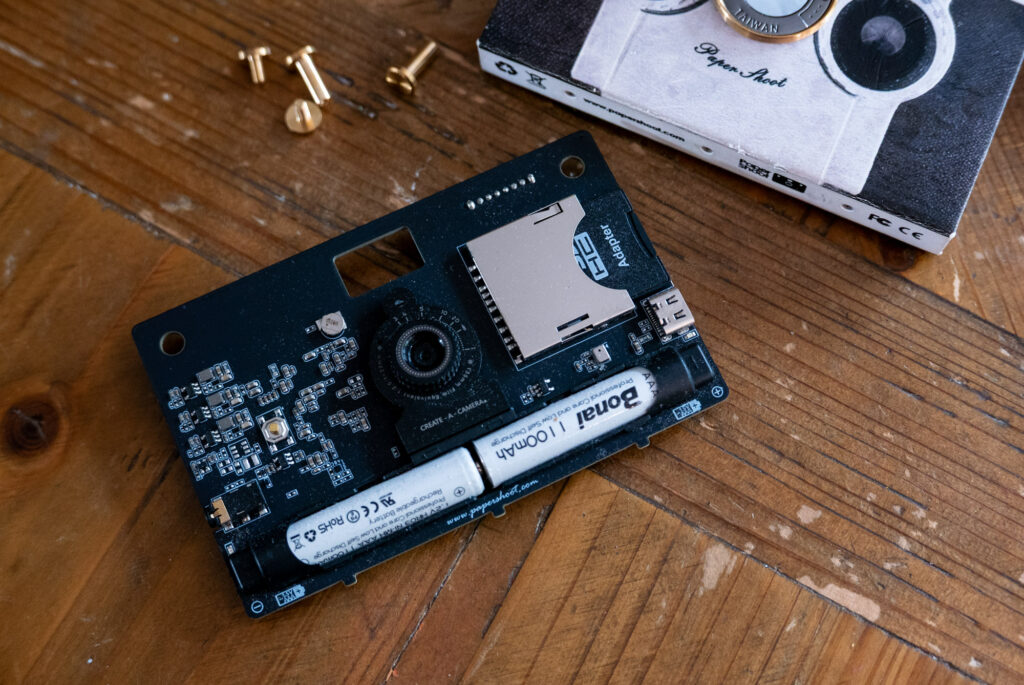
Taking a photo
As mentioned, there is no on/off switch. The lack of on/off switch means the camera is turned on when you press the shutter button. The result of this is huge shutter lag for the first photo. And in fact, unless you take a second photo almost immediately after, the camera switches back off again. The purpose of this is obviously to save the battery – it seems to work too, a single charge of the thing can last days of light snapping (about 200 shots per charge according to their website). The shutter lag when trying to take photos of anything that moves is pretty annoying though and definitely needs to be taken into account and possibly even articulated to your subject if you’re taking portraits/photos of people.
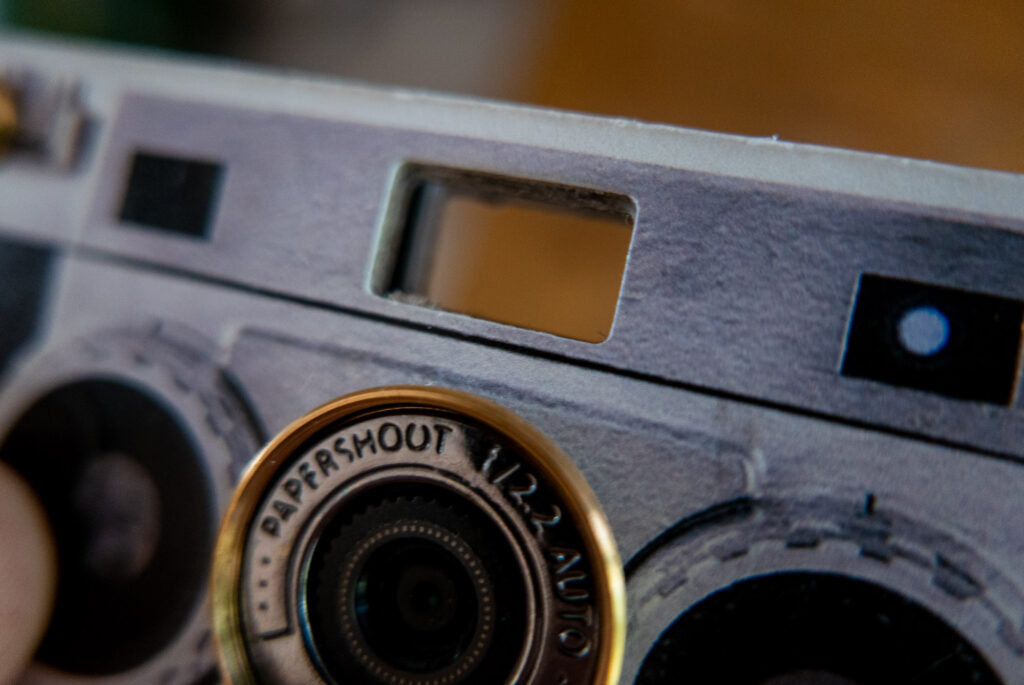
With that said, the photo taking experience could barely be more simple. You just look though the cut-out viewfinder and push the button on the front until the camera makes the artificial sound of a real camera. And as I say, if you take a second photo quickly after, the camera doesn’t go immediately to sleep so you can take follow-up shots with about half the shutter lag.
Switching modes
The switch on the back is a four-way switch that in the camera’s basic state lets the user select between a standard colour mode, a black and white mode, a warm colour mode and cool colour mode. Obviously we are talking JPEGS here (not RAW) so the choice is baked in. And that’s the only mode options the basic camera has. To change modes beyond this, you need to insert the little SIM cards into it.
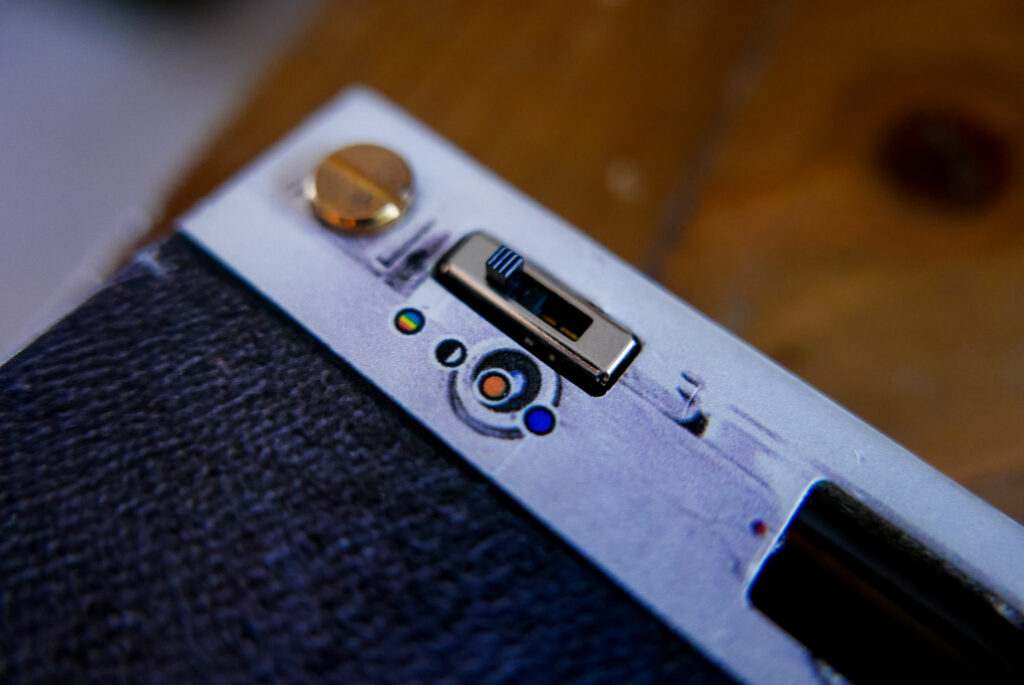
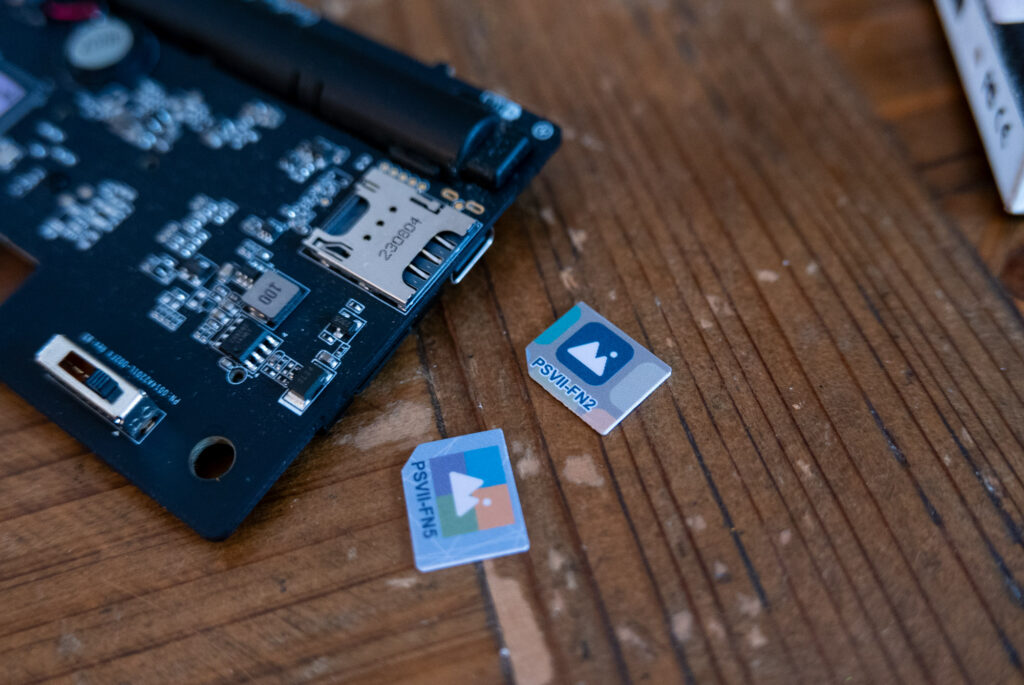
The SIM cards change the functionality of the switch. There are some cards that bring different colour/image toning options for both black and white and colour images. There’s also a few cards that add options such as square images, Polaroid-style frames on the images, double exposure, time lapse and video recording. I guess all these features are just built into the camera with the SIM card just activating them. It’s quite an interesting way to minimise the need for switches/buttons on the camera for accessing settings, but it does have the obvious downfall that the you can’t combine certain settings and options as only one card can be inserted at a time. You also need to remember which SIM card you have inserted as there’s no screen or any sort of readout on the camera that can tell you what the camera is doing.
Correct exposure…?
Oh and yeah, in case you were wondering you can’t really rely on it taking accurate or repeatable exposure either. It does what it wants – and quite often that might not be what you expect.
Some photos







Final thoughts
I’m sure this all sounds like a bit of a disaster area. Try and frame with the viewfinder properly and you will be disappointed, it’s not accurate. Try to take a photo in the “decisive moment”, nope, too slow. Try and capture something with some level of accuracy in terms of exposure and there’s a damn good chance it will let you down in that regard too.
The reality is though, even avoiding the idea of delving into the specs, I am still picking this thing apart as a camera in the same way I would any other camera. I am after all both an expert and a professional don’t you know?! I am a real photographer! You know the type… I have lots of expensive real cameras and take myself very seriously. As I have articulated many times on this website, I don’t even really like serendipity to play a part in my photography process. Even when using lenses that have loads of “character”, I like to spend a lot of time getting to understand that character so as to learn how to harness it to the greatest degree within the photos I take with it.
Fortunately, for the sake of this camera and indeed this review, I am also self aware enough to know that the photographer I have just described can a bit of a pompous bore. What with him being me, I also know is that sometimes it’s good for him to take a break from being so pompous – or at very least take a break from taking everything so seriously – and do something like shoot a camera like the Papershoot.
Also fortunately for the Papershoot, I know I am preaching to the converted when it comes to their target audience. These things are selling by the bucket load to people who don’t take photography too seriously. They will also be very intriguing to those who do take photography seriously, but like to embrace serendipity as an important part of their creative process.
For people more like me though – and I know you’re the majority when reading this website – all you really need to know is what I said in the first paragraph. I’m sure some folks out there won’t be able to get past the idea that the Papershoot a load of junk. It really is if you compare it to any “real” camera. But, if you can free your mind from all that, ya know, “photography” nonsense, and just point it vaguely in the direction of something and then just let what happens happen, you might just find yourself having the aforementioned fun. Snap for snapping’s sake and embrace the serendipity of it all, and you might be surprised by the odd photo it produces too. It really is fun. I’ve given this one to my 14 year old daughter… but I will be borrowing it back!
Share this post:
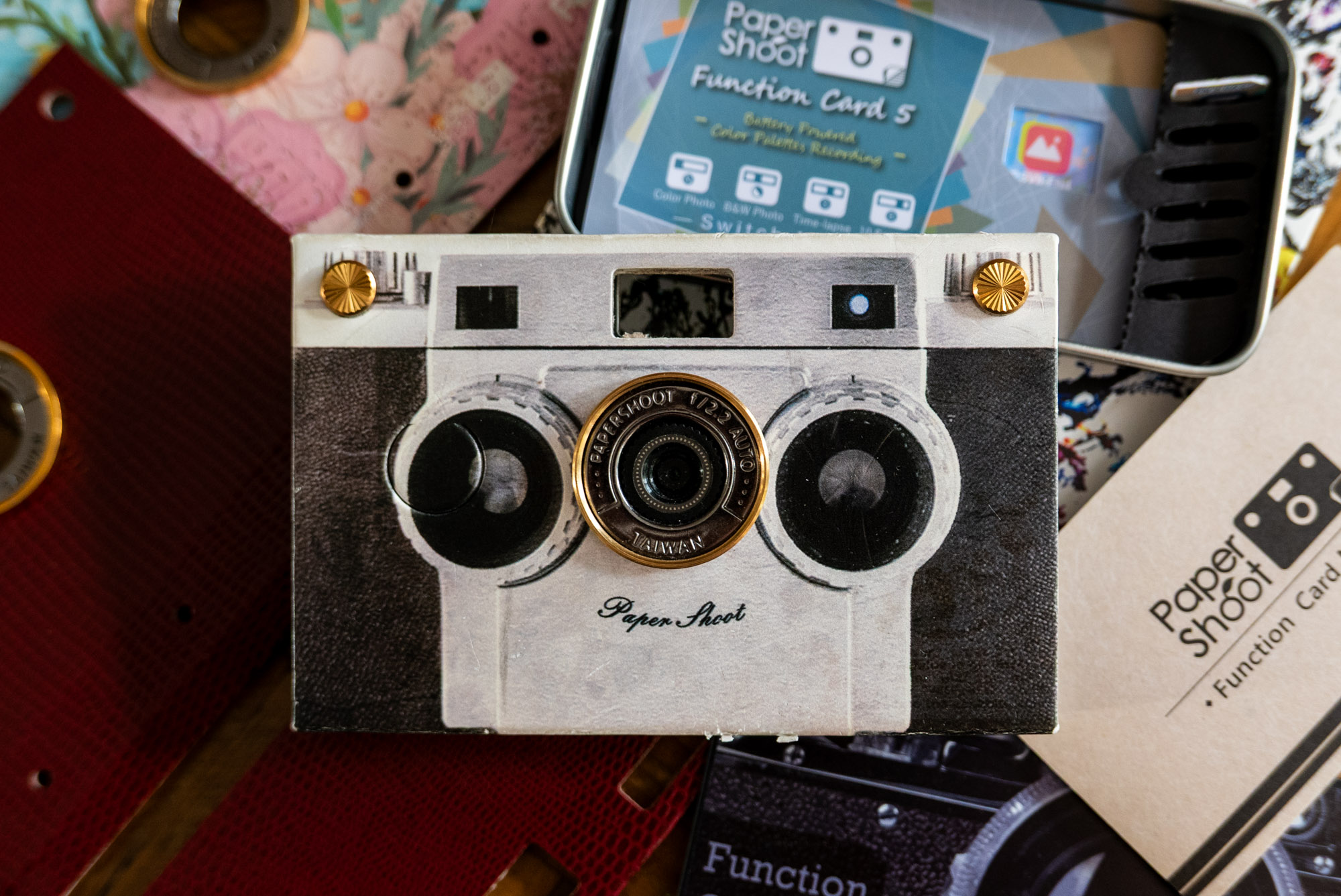
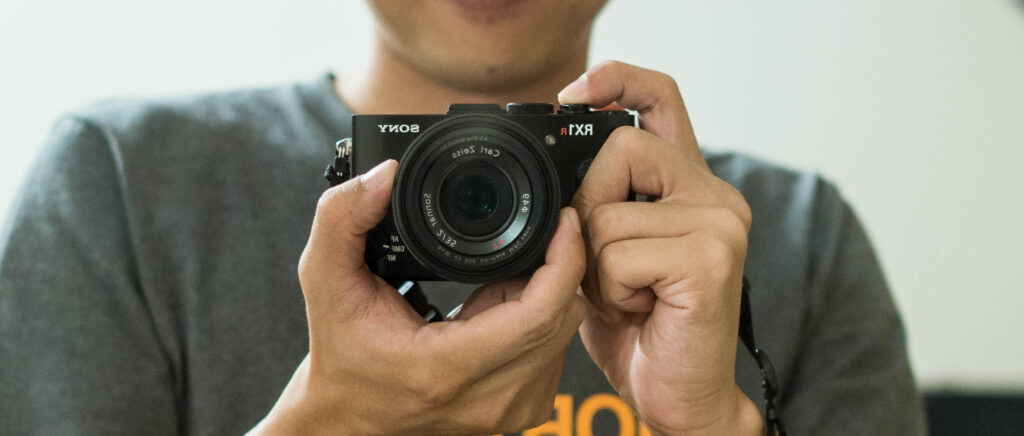
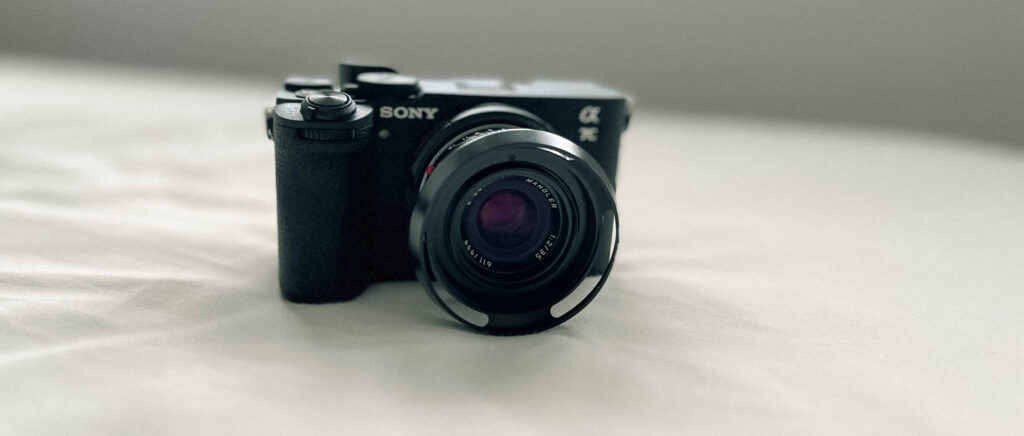
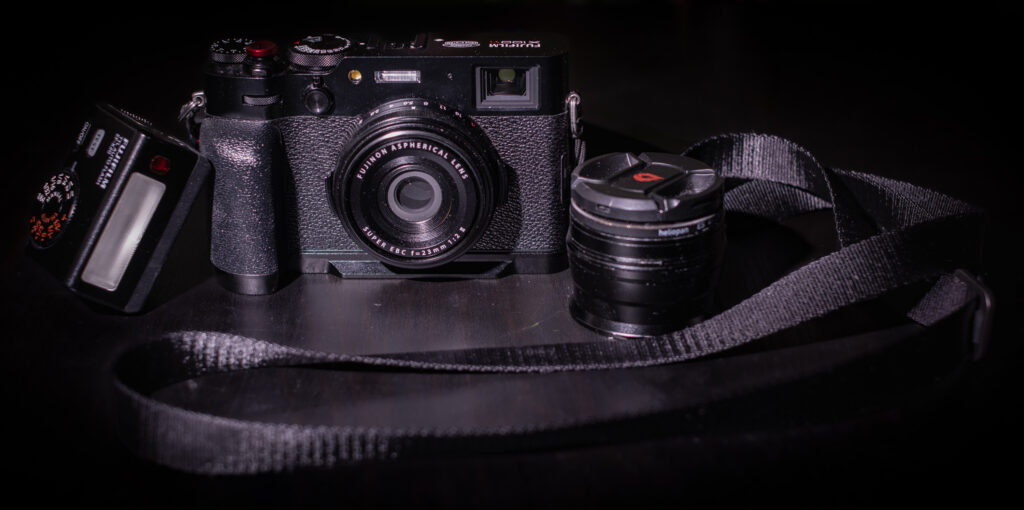
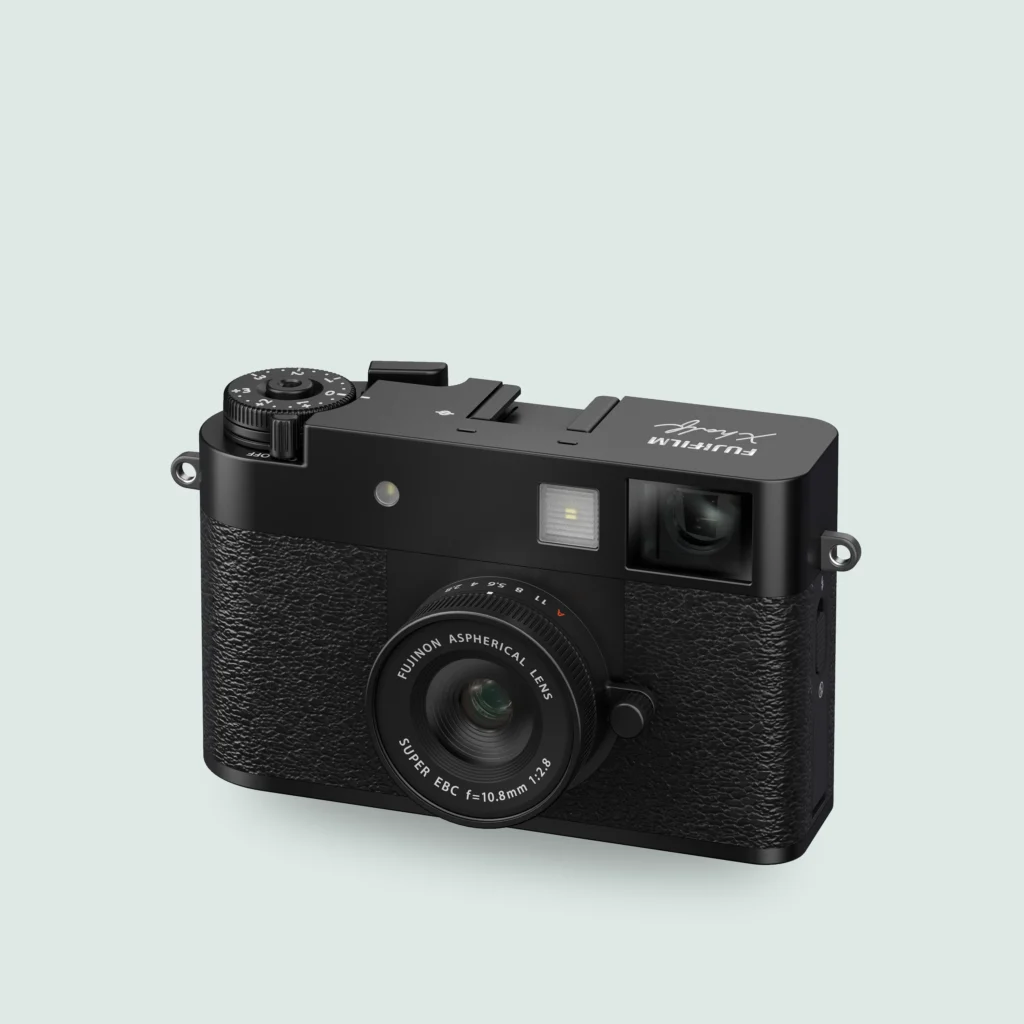
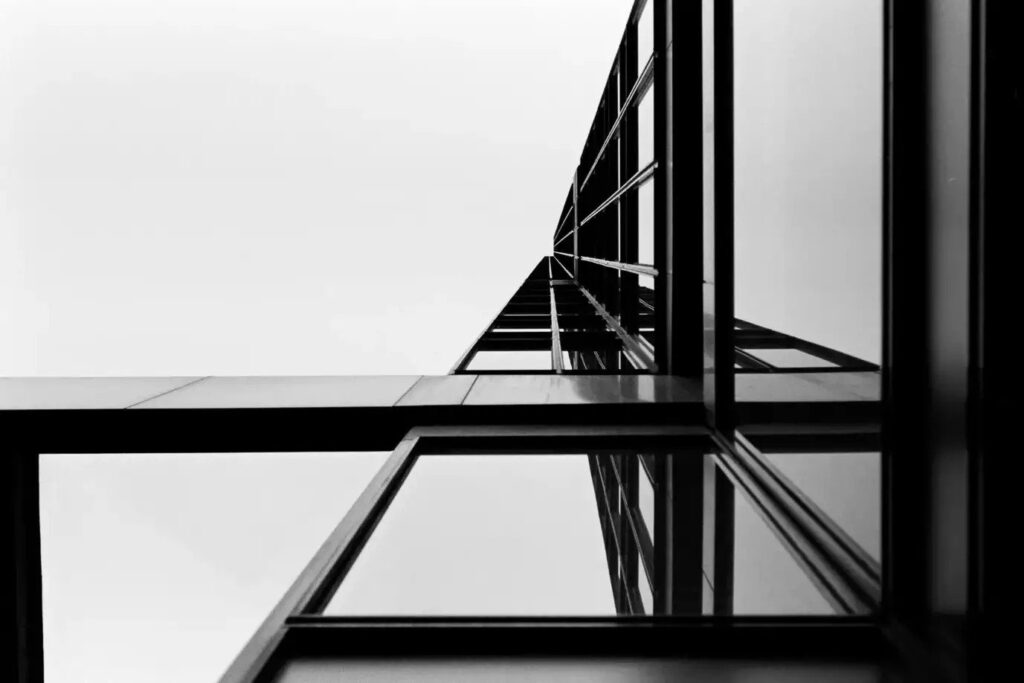
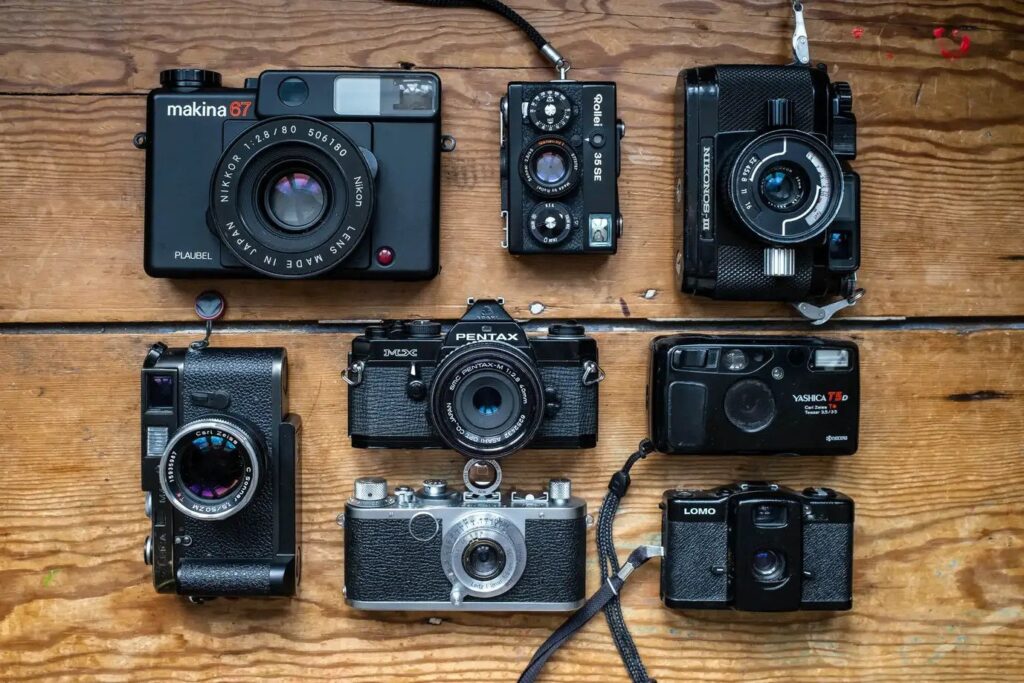
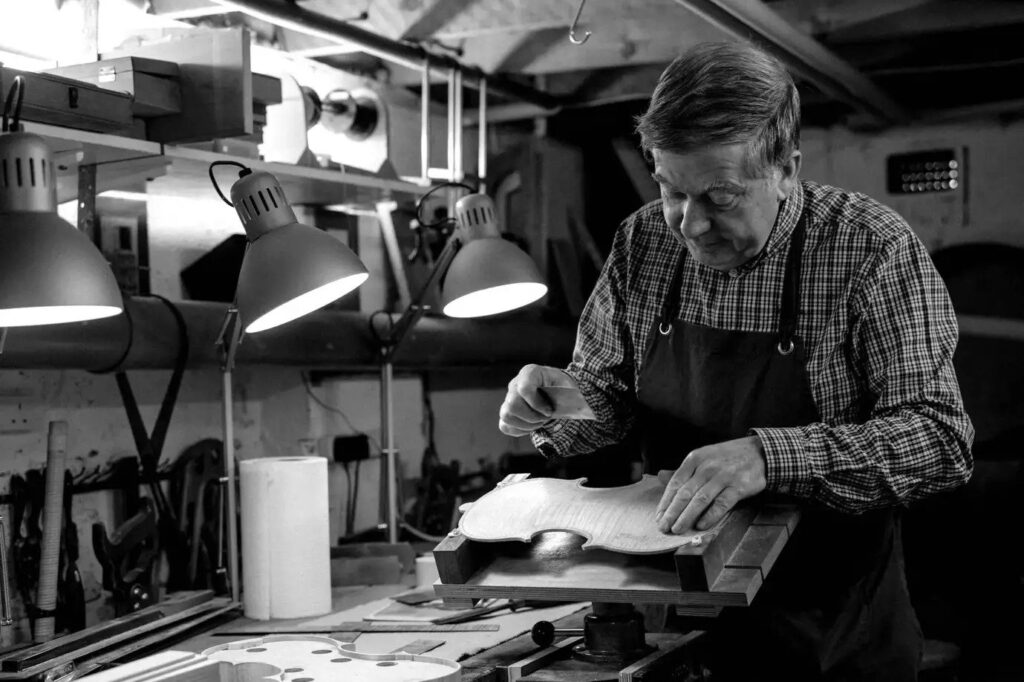
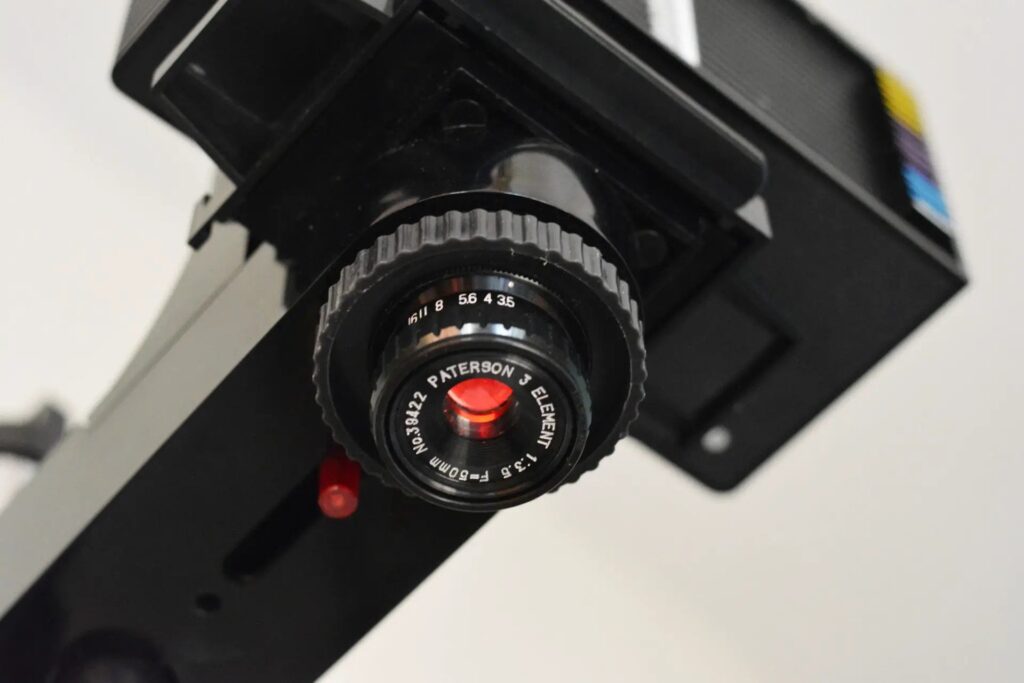
Comments
Paul Quellin on Papershoot – A “Real” Photographer’s Review
Comment posted: 06/10/2025